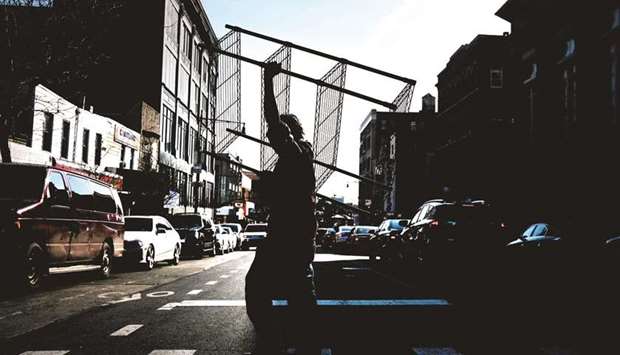Fewer Americans filed new claims for unemployment benefits last week as the labour market recovery gains steam amid an economic boom, which is being fuelled by a rapidly improving public health situation and massive government financial assistance.
Labour market strength was reinforced by other data yesterday showing US-based employers in April announced the fewest job cuts in nearly 21 years.
The reports added to other upbeat employment data in suggesting that the economy enjoyed another blockbuster month of job growth in April.
But the labour market is not out of the woods yet, with about 16.2mn people still on unemployment benefits.
“Claims are signalling a new stage in the labour market recovery,” said Gus Faucher, chief economist at PNC Financial in Pittsburgh, Pennsylvania. “Although unemployment remains elevated, the labour market is rapidly recovering.”
Initial claims for state unemployment benefits tumbled 92,000 to a seasonally adjusted 498,000 for the week ended May 1, the Labor Department said.
That was the lowest since mid-March 2020, when mandatory shutdowns of nonessential businesses were enforced to slow the first wave of Covid-19 infections.
Economists polled by Reuters had forecast 540,000 applications for the latest week.
The government has provided nearly $6tn in pandemic relief over the past year.
Americans over the age of 16 are now eligible to receive the Covid-19 vaccine, leading states like New York, New Jersey and Connecticut to lift most of their coronavirus capacity restrictions on businesses.
Reports on Wednesday showed private employers hired the most workers in seven months on April, while a measure of services industry jobs rose to more than a 2-1/2-year high. Consumers’ perceptions of the labour market are the strongest in 13 months.
In a separate report yesterday, global outplacement firm Challenger, Gray & Christmas said layoffs announced by US-based employers fell 25% in April to 22,913, the fewest since June 2000.
Planned layoffs so far this year are down 84% from the same period in 2020.
According to a Reuters survey of economists, nonfarm payrolls likely increased by 978,000 jobs last month after rising by 916,000 in March.
That would leave employment about 7.4mn below its peak in February 2020.
Estimates range from as low as 656,000 to as high as 2.1mn jobs.
The Labor Department will publish April’s employment report today.
Jobless claims have dropped from a record 6.149mn in early April 2020.
They are, however, well above the 200,000-250,000 range that is viewed as consistent with a healthy labour market.
Part of the elevation has been blamed on fraud as well as the enhancement of the unemployment benefits programmes, including a weekly $300 subsidy, which could be encouraging some people to attempt to file a claim for assistance, though not every application is approved.
Including a government-funded programme for the self-employed, gig workers and others who do not qualify for the regular state programmes, 605,884 people filed for claims last week.
These benefits and the weekly subsidy end in early September.
They have been blamed for worker shortages across many industries.
“The government is paying more to be on the unemployment rolls than the private sector is paying to work at their businesses,” said Joel Naroff, chief economist at Naroff Economics in Holland, Pennsylvania. “The choice is clear, at least until the enhanced benefits run out.”

File photo taken on March 10 shows a man crossing the street in the South Bronx in New York City. The US government has provided nearly $6tn in pandemic relief over the past year.
